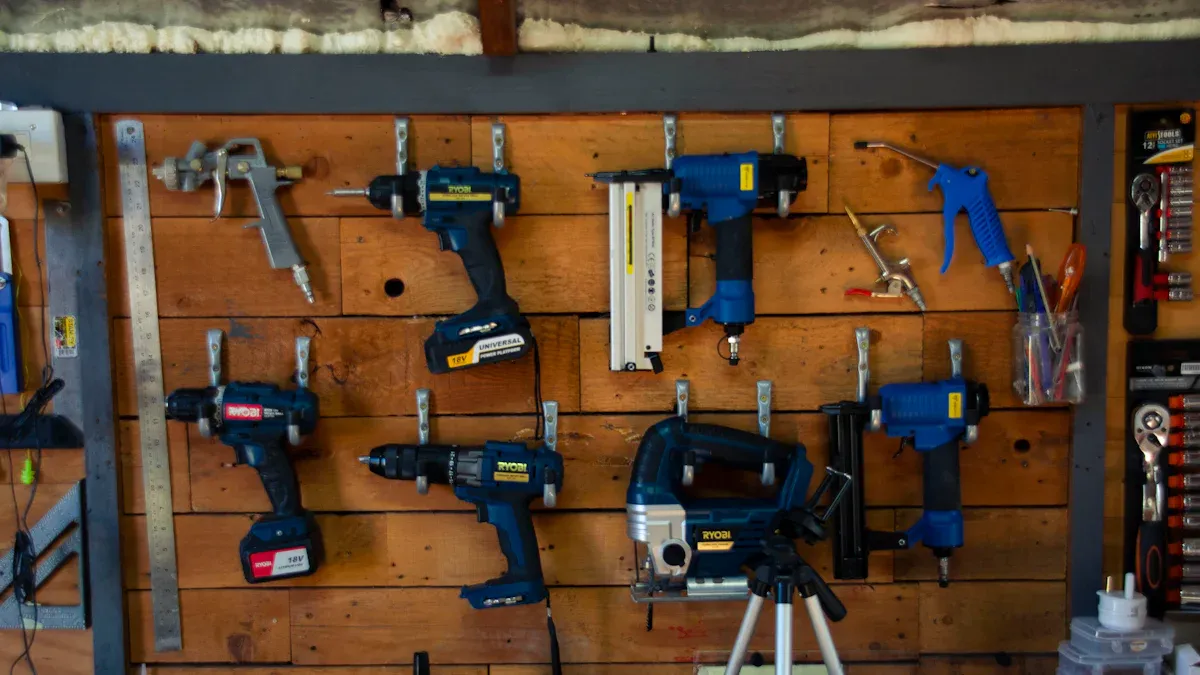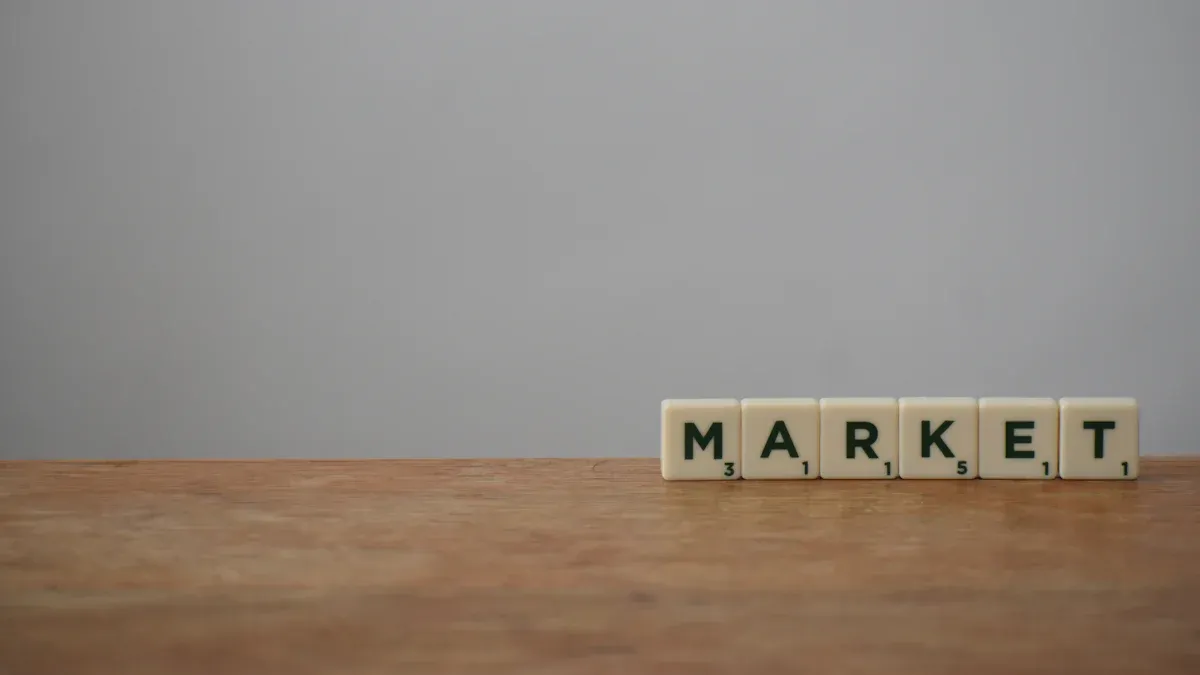How US Tariffs Are Shaping the Residential Hinges Market in 2025

US tariffs in 2025 have driven significant price hikes for residential hinges. Homeowners, contractors, and industry professionals now face supply chain disruptions and sourcing challenges. Immediate responses include shifting to local suppliers and adjusting project budgets.
Stakeholders should monitor market updates and seek alternative procurement strategies.
Key Takeaways
- US tariffs in 2025 raised prices on residential hinges, especially aluminum ones, causing higher costs for homeowners, contractors, and retailers.
- Supply chain delays and shortages are common, so planning early and diversifying suppliers help avoid project disruptions.
- Manufacturers respond by boosting domestic production, using new materials, and innovating designs to keep prices stable and supply steady.
Residential Hinges Tariffs in 2025

Current Tariff Rates and Scope
In 2025, the United States government enforces strict tariffs on construction materials, including residential hinges. Starting April 5, 2025, a general 10% tariff applies to all imported goods unless a trade agreement provides an exemption. However, aluminum and derivative products, which include most residential hinges, face a higher tariff rate. The government sets this rate at 25% for these categories. This policy supersedes previous deals and exclusions, creating a new baseline for import costs.
| Construction Material Category | Tariff Rate (2025) | Notes |
|---|---|---|
| Aluminum and derivative products (including hinges) | 25% | Globally applied tariff, supersedes previous deals and exclusions |
Note: USMCA-compliant goods from Canada and Mexico remain duty-free, except for autos and auto parts.
These changes force importers and distributors to reassess their sourcing strategies. Many companies now calculate higher landed costs for imported hinges, which directly impacts pricing throughout the supply chain.
Countries and Products Affected
The 2025 tariffs affect a broad range of countries and products. The United States applies the 25% tariff globally to aluminum and derivative products, which includes most residential hinges. This policy covers imports from major manufacturing hubs such as China, India, and several Southeast Asian countries. Only Canada and Mexico receive exemptions under the USMCA agreement, provided the products meet compliance standards.
Affected products include:
- Door hinges for residential use
- Cabinet hinges and hardware
- Aluminum-based hinge assemblies
Manufacturers in exempt countries gain a competitive advantage. They can offer lower prices and faster delivery times compared to suppliers from tariffed regions.
Timeline of Tariff Implementation
The timeline for the 2025 tariff changes follows a clear sequence:
- April 5, 2025: The United States implements a general 10% tariff on all imported goods, with exemptions for certain trade agreements.
- April 9, 2025: The government introduces higher, category-specific tariffs. Aluminum and derivative products, including residential hinges, become subject to a 25% tariff rate.
- Ongoing: Exemptions for USMCA-compliant goods from Canada and Mexico remain in effect, except for autos and auto parts.
This timeline gives importers and distributors a narrow window to adjust procurement plans. Many companies accelerate orders before the higher tariffs take effect, leading to temporary inventory spikes and subsequent shortages.
Residential Hinges Price Increases
Wholesale and Retail Price Trends
In 2025, wholesale prices for residential hinges have surged. Distributors report average cost increases of 18% compared to the previous year. Retailers pass these higher costs to consumers. Many hardware stores now display price tags that reflect the new tariff-driven expenses. Some retailers offer limited-time discounts to move older inventory, but new shipments arrive at much higher prices.
| Year | Average Wholesale Price | Average Retail Price |
|---|---|---|
| 2024 | $1.20 per hinge | $2.50 per hinge |
| 2025 | $1.42 per hinge | $2.95 per hinge |
Note: Prices vary by material and finish, but all categories show upward trends.
Impact on Home Construction and Renovation Costs
Builders and contractors face higher project budgets. The increased cost of residential hinges adds to the overall expense of new homes and renovations. For a standard single-family home, hinge costs may rise by $100 to $200 per project. This change forces contractors to adjust quotes and timelines. Homeowners may delay upgrades or seek alternative hardware to manage expenses.
Regional Differences in Pricing
Pricing for residential hinges varies across the United States. Coastal cities, which rely more on imports, see the steepest increases. Midwest and Southern regions benefit from proximity to domestic suppliers and lower transportation costs. Some local retailers in exempt border states, such as those near Canada, offer more competitive pricing due to easier access to tariff-free goods.
Residential Hinges Supply Chain Disruptions
Inventory Shortages and Delays
Many distributors report inventory shortages for residential hinges in 2025. Warehouses in major ports experience backlogs as shipments face customs inspections and new tariff documentation. Retailers often receive partial orders, which leads to empty shelves and frustrated customers. Some companies implement purchase limits to manage low stock levels.
Note: Early planning and bulk purchasing can help reduce the risk of running out of essential hardware.
Sourcing Challenges for Importers and Retailers
Importers now face complex sourcing decisions. They must evaluate suppliers based on tariff exposure, shipping reliability, and compliance with new regulations. Many shift orders to Canadian or Mexican manufacturers to avoid higher costs. However, increased demand from U.S. buyers strains these suppliers, causing longer wait times. Retailers also struggle to maintain consistent product lines as they juggle multiple vendors.
- Key sourcing challenges:
- Limited supplier capacity in exempt countries
- Increased paperwork for customs clearance
- Fluctuating shipping costs
Effects on Lead Times and Availability
Lead times for residential hinges have increased across the industry. Projects that once required a week for hardware delivery now take two to three weeks. Builders and contractors must adjust project schedules to account for these delays. Some regions experience longer wait times due to higher demand or limited access to alternative suppliers.
Tip: Contractors should communicate expected delays to clients and order hardware well in advance.
Industry Responses to Tariffs on Residential Hinges
Shift Toward Domestic Manufacturing
Manufacturers have responded to tariffs by increasing domestic production of residential hinges. Monroe Engineering reports that companies with U.S.-based manufacturing and warehousing maintain more stable pricing and lead times during global trade disruptions. Hinge Outlet, for example, has shifted more hinge and hardware production to the United States in 2025. Although American-made hinges cost three to four times more than imports, tariffs have changed the cost equation. Domestic production now offers advantages such as reduced shipping delays, avoidance of extra fees, and improved quality control. Hardware manufacturers also partner with American suppliers to reduce tariff risks, even if this temporarily increases lead times.
Domestic manufacturing helps companies avoid international shipping delays and maintain better inventory control.
Supplier Diversification Strategies
Companies have diversified their supplier base to manage tariff impacts. Many firms now source from Southeast Asia and Latin America to reduce exposure to U.S. tariffs. Investments in domestic rolling mills and die-casting facilities support near-shoring efforts and help stabilize pricing. Businesses balance domestic production with low-cost regional hubs to ensure a steady supply. Strategic partnerships and selective acquisitions strengthen regional supply chains and improve resilience. These strategies help companies respond quickly to market changes and reduce cost pressures.
- Sourcing from multiple regions
- Investing in local production facilities
- Building strategic partnerships
Material and Design Innovations
Industry leaders have accelerated innovation in materials and design. Some manufacturers use alternative metals or composite materials to offset rising costs. Others redesign hinges to use less raw material without sacrificing strength or durability. These innovations help companies maintain competitive pricing and meet changing customer demands. By focusing on efficiency and adaptability, the industry continues to evolve despite ongoing tariff challenges.
Stakeholder Impact in the Residential Hinges Market
Homeowners and DIY Consumers
Homeowners and DIY consumers have felt the impact of tariffs on residential hinges in 2025. Many report higher renovation costs and increased difficulty sourcing affordable hardware.
- 84% of homeowners recognize that tariffs negatively affect remodeling expenses.
- 67% worry that higher prices will prevent them from completing desired renovations.
- 80% have seen renovation quotes rise by more than $1,000 due to tariffs.
- 62% say tariffs influence their decisions about home upgrades.
- About 20% avoid kitchen or bathroom remodels because of cost increases.
DIY projects also face challenges. Raw material costs for furniture projects have jumped by 30%, making even small upgrades more expensive. Metal hardware, including European hinges, now costs more. Seniors needing home modifications, such as wheelchair ramps, see prices rise from $1,700 to $2,000. Many homeowners delay or scale back projects, choosing smaller upgrades or using reclaimed materials.
Tip: Focusing on essential repairs and sourcing locally can help manage costs.
Contractors and Builders
Contractors and builders face rising costs and uncertainty in project planning.
- Tariffs have increased expenses for imported construction materials, including residential hinges.
- Builders now include contract clauses to address sudden price changes.
- Reliance on imports makes the industry vulnerable to cost pressures.
- Supply chain disruptions cause delays and force builders to find new suppliers.
- Smaller firms struggle more with adapting to these changes.
Budgeting and planning have become more complex. Builders often receive advance notice of price hikes and must adjust quotes. Higher construction costs lead to increased home prices, making new homes less affordable. Some builders offer incentives to offset these challenges for buyers.
Manufacturers and Distributors
Manufacturers and distributors have shifted strategies in response to tariffs. Companies like Hinge Outlet now produce more hardware in the United States, despite higher costs. Domestic production reduces shipping delays, avoids extra fees, and improves inventory control.
- Tariffs on imported goods and raw materials have forced price increases.
- Supply chain disruptions make imported parts harder to source.
- Partnerships with American suppliers have become more common.
- Companies encourage customers to purchase early to avoid further price hikes.
Manufacturers emphasize the long-term benefits of domestic production, such as supply chain resilience and supporting U.S. jobs, even as they acknowledge the immediate cost increases.
Practical Tips for Navigating Residential Hinges Tariffs
Cost-Saving Approaches for Homeowners
Homeowners can manage higher hardware costs by adopting several practical strategies:
- Use reclaimed wood for home projects to reduce material expenses.
- Source materials from local sawmills, which helps avoid tariff-driven price increases.
- Simplify project designs to use fewer materials and lower overall costs.
- Compare prices and request multiple quotes before making purchases.
- Start renovation projects early to secure materials before further price hikes.
- Scale down project plans to focus on essential upgrades.
Tip: Prioritizing essential repairs and seeking local suppliers can help homeowners stretch their budgets further.
Sourcing and Planning for Contractors
Contractors face unique challenges in a volatile market. They can mitigate risks and control costs by:
- Diversifying supply sources to avoid overreliance on tariff-affected imports.
- Investing in domestic manufacturing or sourcing from countries not subject to tariffs.
- Implementing value engineering to optimize material choices and design for cost-effectiveness.
- Procuring materials in advance to lock in prices and reduce exposure to future increases.
- Including price adjustment and force majeure clauses in contracts to manage cost escalation.
- Maintaining clear communication with suppliers, subcontractors, and clients to coordinate responses and minimize disruptions.
- Monitoring cash flow closely and updating forecasts to handle uncertainties.
Contractors who plan ahead and maintain flexibility in sourcing can better manage project timelines and budgets.
Forecasting and Adaptation for Industry Professionals
Industry professionals use several methods to stay ahead in a changing market. They segment the market by application, hinge type, and material to identify growth opportunities. Many manufacturers develop innovative products, such as concealed or smart adjustable hinges, to meet evolving consumer preferences. Sustainability remains a priority, with companies adopting eco-friendly materials and greener production processes. Strategic partnerships and online retail expansion help reach new customers and support bulk or customized orders. Technological advancements, including soft-closing mechanisms and app-controlled hinges, drive product differentiation. Customization for specific applications has become a key factor for success.
Staying informed about market trends and investing in innovation enables industry professionals to adapt quickly and maintain competitiveness.
Residential Hinges Market Outlook for 2025

Expected Trends for the Remainder of the Year
Industry forecasts point to steady growth for the hinges market through the end of 2025. Several trends shape this outlook:
- The global architectural and furniture hinges market is projected to reach $5.26 billion in 2025, with a strong compound annual growth rate through 2033.
- Premium residential projects contribute over one-fifth of total market value.
- Smart home adoption continues to rise, driving demand for hinges with integrated sensors and security features.
- Concealed, corrosion-resistant, and soft-close hinges see significant growth, reflecting consumer preferences for durability and convenience.
- Manufacturers focus on innovation, sustainability, and regional expansion, especially in Asia-Pacific and Europe.
- Online sales channels expand rapidly, while offline sales remain dominant.
Potential Changes in Tariff Policy
Policymakers continue to debate tariff adjustments as supply chain disruptions and raw material price volatility persist. Some industry analysts expect targeted relief measures for critical building materials if inflationary pressures intensify. However, most experts predict that current tariffs will remain in place for the remainder of 2025. Companies monitor trade negotiations closely, as any policy shifts could impact sourcing strategies and pricing.
Long-Term Industry Projections
Long-term projections remain positive. The market is expected to grow at a compound annual rate of 5.4% to 6% through 2033. Stainless steel hinges will likely lead growth due to their durability and resistance to corrosion. Asia-Pacific and developing economies show the highest potential, fueled by rapid urbanization and infrastructure investment. Manufacturers prioritize sustainability, customization, and smart technology integration to meet evolving consumer demands.
US tariffs in 2025 have increased costs and disrupted supply for residential hinges. Stakeholders can adapt by:
- Adjusting pricing models and contracts.
- Using value engineering and alternative materials.
- Scheduling projects early and communicating openly.
- Monitor government updates and industry news.
- Build strong vendor relationships for timely information.
FAQ
What types of residential hinges face the highest tariffs in 2025?
Aluminum-based hinges and derivative products receive the highest tariffs. These items face a 25% rate, which applies to most imports except those from Canada and Mexico.
How can contractors reduce project delays caused by hinge shortages?
Contractors order hardware early and diversify suppliers. They communicate with clients about possible delays and adjust project schedules to account for longer lead times.
Do US-made hinges offer better value despite higher prices?
US-made hinges provide stable supply and quality control. Many buyers accept higher costs for reliability, faster delivery, and reduced risk of tariff-related disruptions.
See Also
Understanding The Differences Between Tee And Strap Hinges
Evaluating The Value Of TDC Residential Door Hinges
Homeowners Guide To Coordinating Hinge Finishes With Hardware
Main Factors And Obstacles Facing New Energy Vehicles Today
Silicone Sealants: The Essential Adhesive For Modern Construction